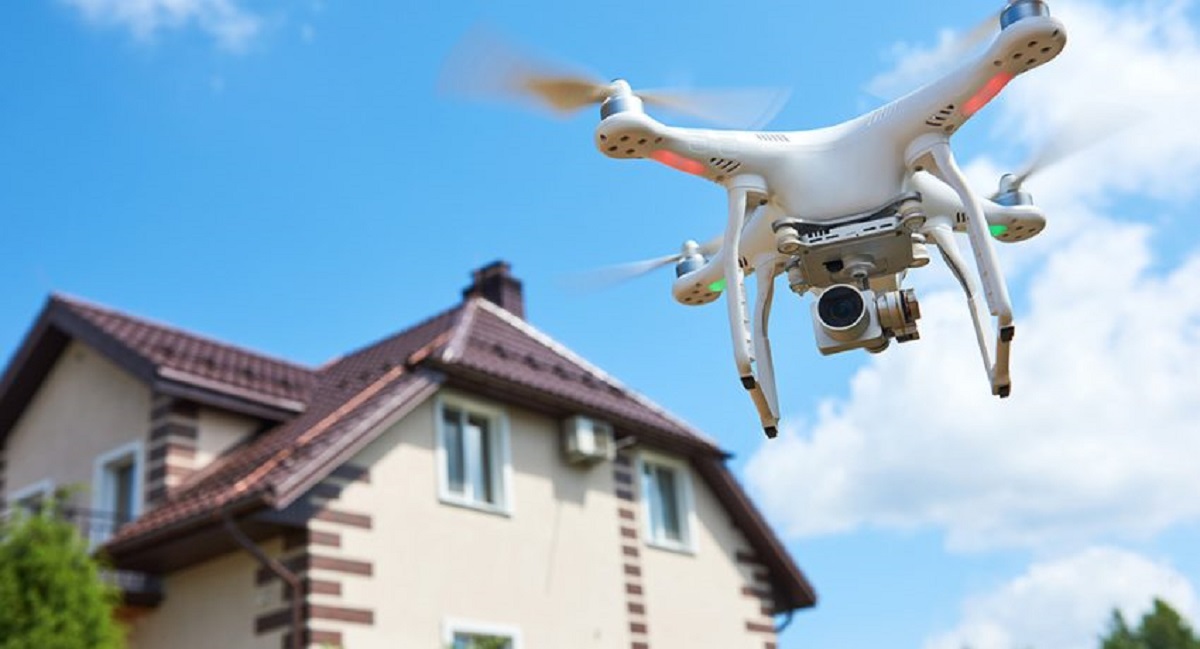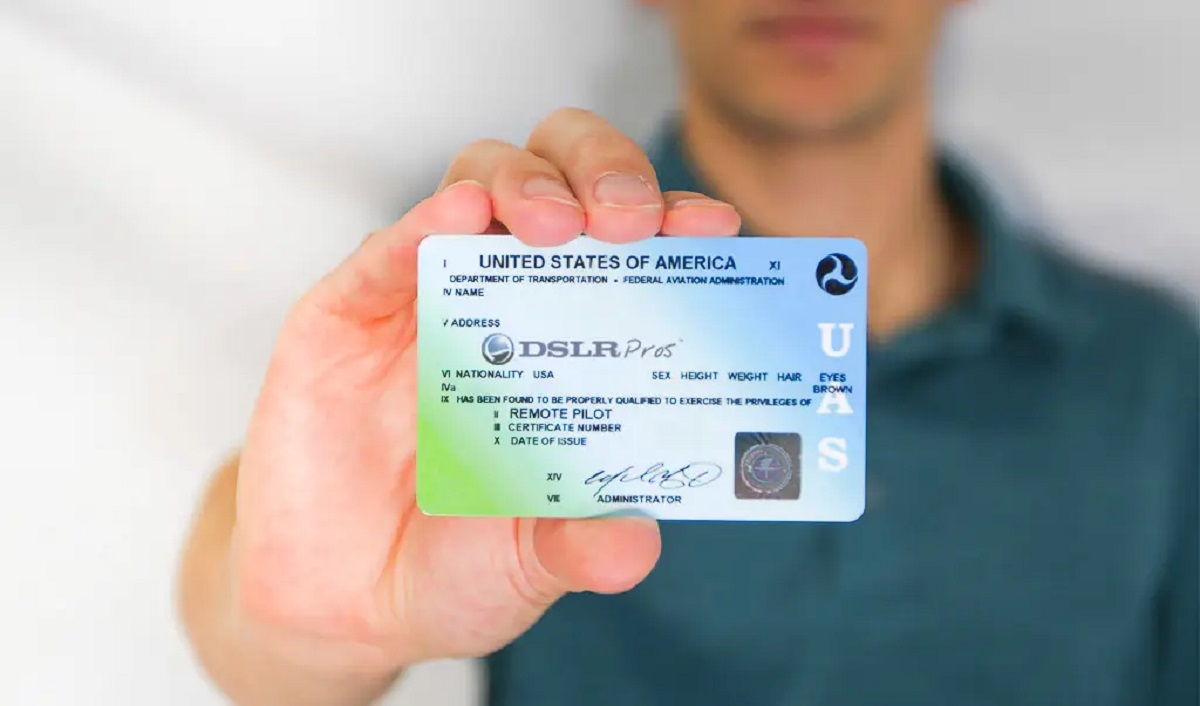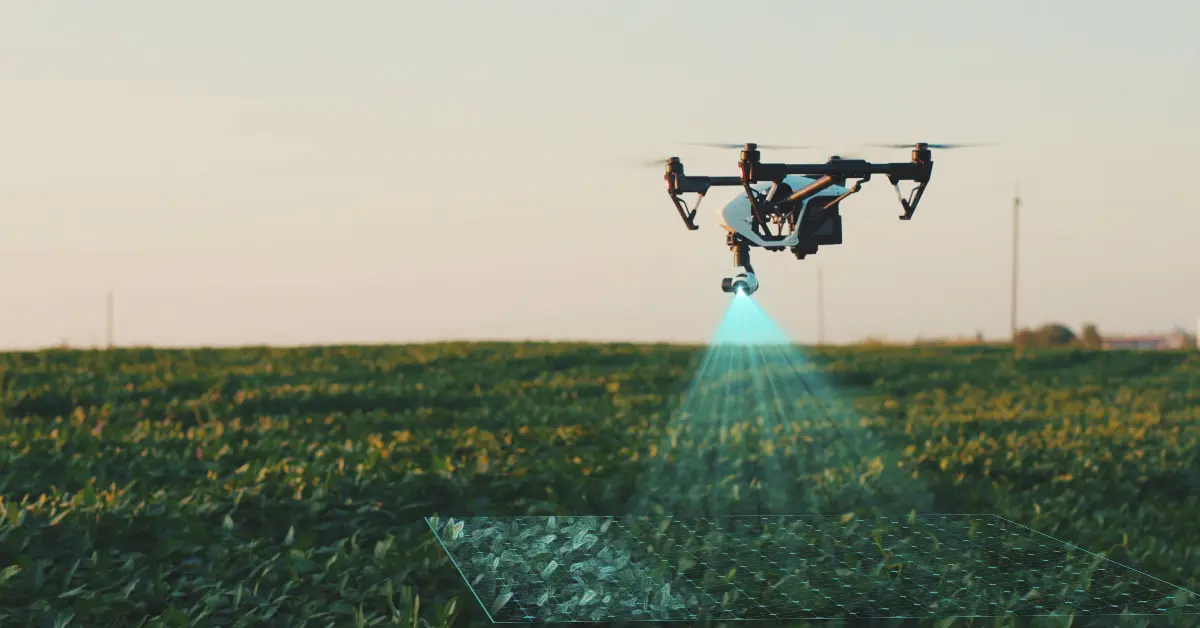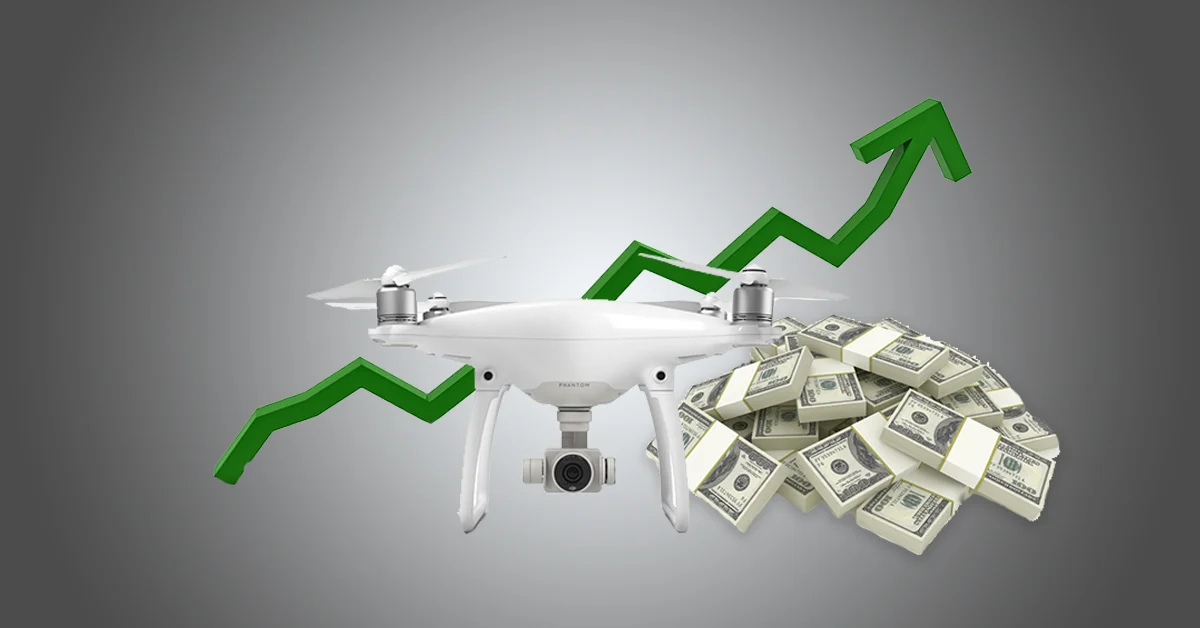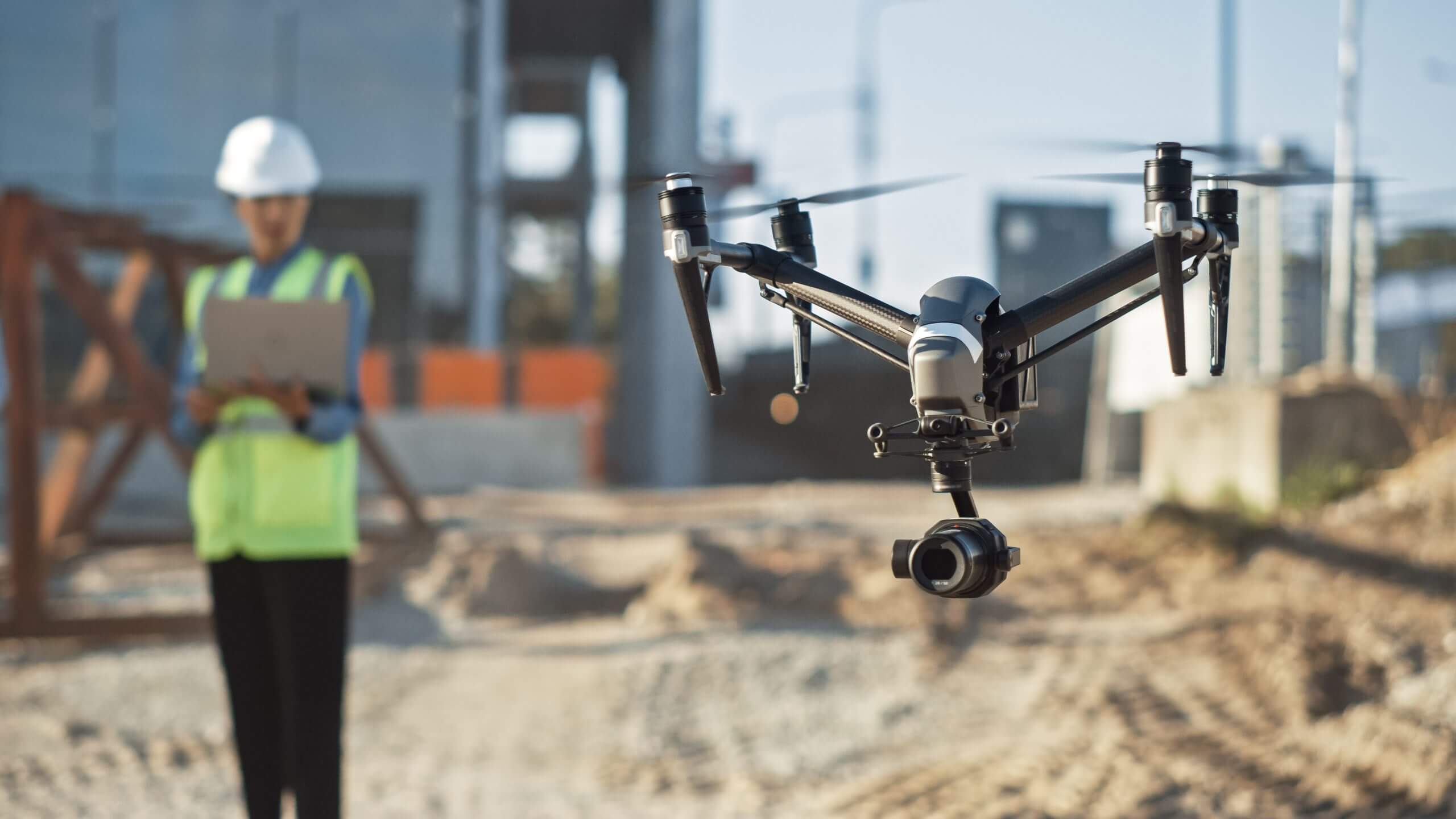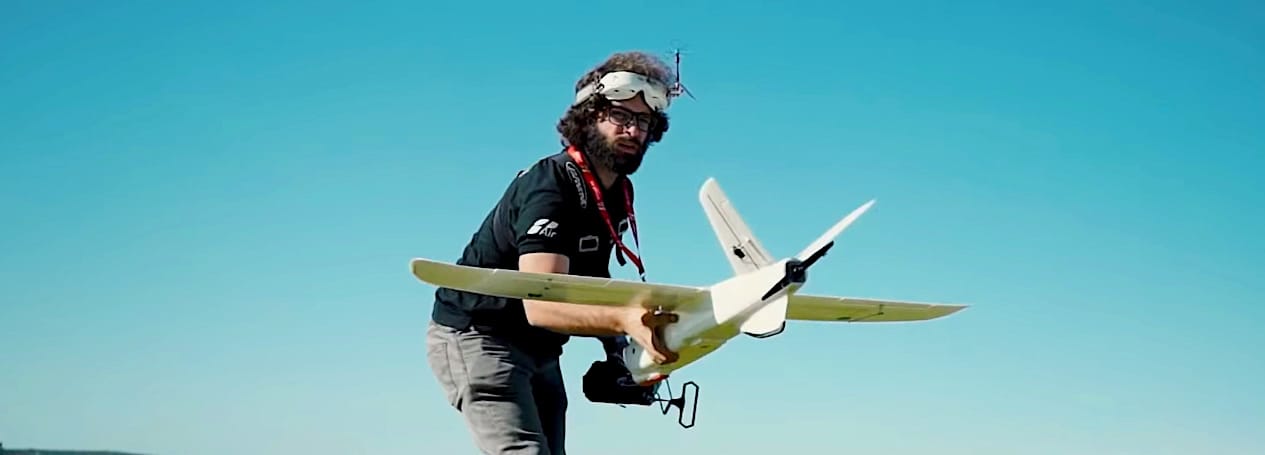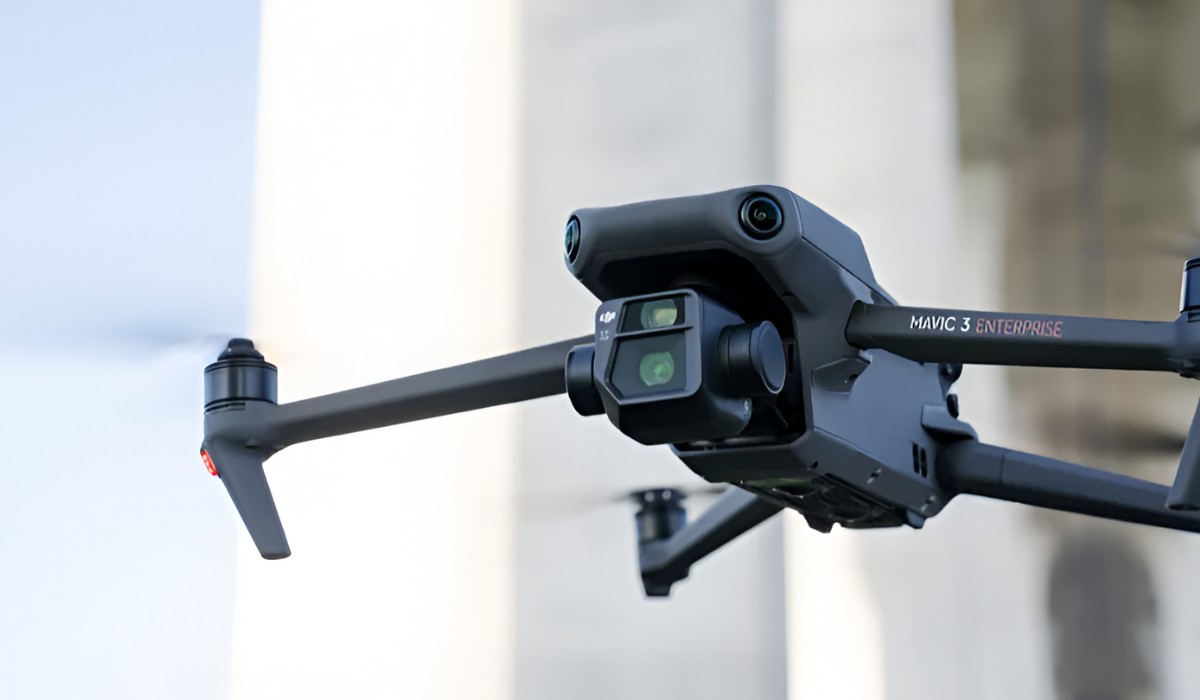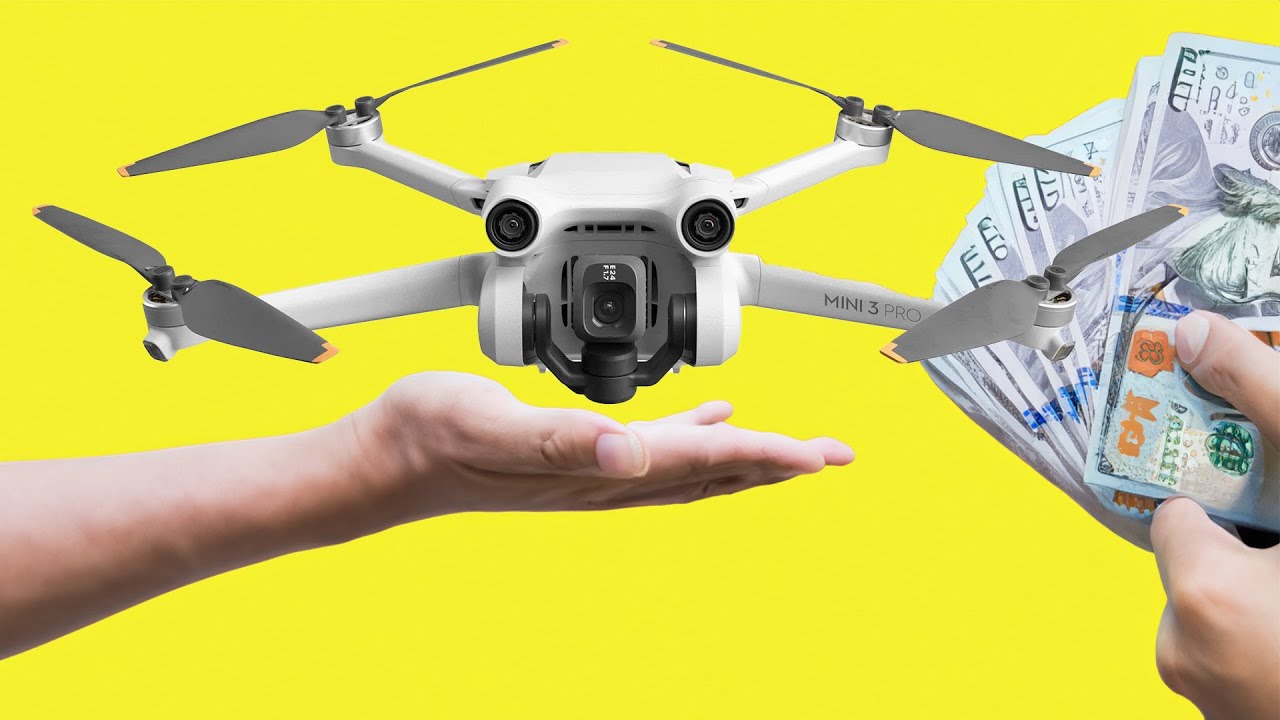Why Real Estate Drone Photography is Important
In today’s competitive real estate market, standing out from the crowd is essential for success. One powerful tool that can help you differentiate yourself as a real estate agent or photographer is drone photography. By using drones to capture stunning aerial shots of properties, you can provide potential buyers with a unique perspective and showcase the full beauty and potential of a property.
So, why is real estate drone photography important? Firstly, it allows you to capture eye-catching images that can instantly grab the attention of potential buyers. Aerial views provide a comprehensive overview of the property’s location, size, and surrounding amenities, making it easier for buyers to visualize themselves in the space. These captivating visuals can leave a lasting impression and set your listings apart from the competition.
Moreover, real estate drone photography enables you to highlight the unique selling points of a property. Whether it’s a sprawling backyard, a stunning swimming pool, or picturesque views, drones can capture these features in a way that traditional photography simply can’t. By showcasing these distinctive attributes, you can effectively communicate the value of a property and generate more interest from potential buyers.
Additionally, drone photography offers a cost-effective solution for showcasing large properties or properties with expansive land. Instead of relying on expensive helicopter or plane rentals, drones provide a more affordable alternative for capturing aerial shots. This accessibility allows you to offer high-quality aerial imagery for a fraction of the cost, making it a valuable asset in your marketing toolkit.
Furthermore, real estate drone photography can enhance the overall marketing strategy for a property. In today’s digital age, where online listings and virtual tours play a crucial role in the home-buying process, incorporating aerial shots can significantly improve the presentation and engagement of your listings. By showcasing the property’s exterior, surrounding neighborhood, and nearby amenities, you can give potential buyers a more comprehensive understanding of the property and its location.
Lastly, real estate drone photography can help you establish a professional and innovative reputation in the industry. By incorporating cutting-edge technology into your photography services, you position yourself as a forward-thinking professional who is willing to go above and beyond to deliver the best experience for your clients. This can build trust, attract more clients, and open up new opportunities in the real estate market.
In summary, real estate drone photography is important because it allows you to capture stunning and unique aerial shots, highlight the property’s features, provide a cost-effective solution for showcasing large properties, enhance your marketing strategy, and establish a professional reputation in the industry. By embracing this emerging technology, you can elevate your real estate business to new heights and leave a lasting impression on potential buyers.
Equipment Needed for Real Estate Drone Photography
When venturing into the world of real estate drone photography, having the right equipment is crucial to ensure high-quality results. Here are the essential tools you’ll need to get started:
1. Drone: The most obvious piece of equipment is a reliable drone. Look for a drone specifically designed for aerial photography, with a stabilized camera, GPS features, and long battery life. Popular models include DJI Phantom series, Mavic series, and Inspire series.
2. Camera: While most drones come with built-in cameras, consider investing in a drone with a high-resolution camera or the ability to attach your own camera. This will allow you to capture detailed and professional-looking photographs.
3. Batteries and Charger: Having extra batteries is essential for extended flight time. Depending on the drone model, batteries typically last around 20-30 minutes. Investing in multiple batteries and a charger will ensure that you have enough power to capture all the necessary shots.
4. Memory Cards: Purchase high-capacity memory cards with fast write speeds to accommodate for the large file sizes of aerial photographs. It’s advised to have multiple memory cards to avoid running out of storage space during a shoot.
5. Controller: A reliable controller is a necessary tool for operating your drone. Look for one with a comfortable grip, responsive controls, and a screen or smartphone mount for live video monitoring.
6. ND Filters: Neutral density (ND) filters are essential for controlling the amount of light entering the camera and achieving proper exposure. These filters are particularly useful in bright daylight conditions, allowing you to capture well-balanced and visually appealing photographs.
7. Propeller Guards: It’s a good idea to invest in propeller guards, especially if you’re new to flying drones. These guards offer an extra layer of protection for both your drone and the surrounding environment, reducing the risk of accidents and damage.
8. Weather Protection: Consider purchasing weather-resistant gear, such as protective cases for your drone and accessories, to ensure their safety in unpredictable weather conditions. It’s also important to have a weather app or website on hand to check for any adverse weather conditions before flying.
9. Safety Gear: Prioritize safety by investing in a launchpad, a high-visibility safety vest, and even a safety net or parachute system for your drone. These additional safety measures will help protect your equipment and minimize any potential risks.
10. Insurance: Lastly, don’t overlook the importance of drone insurance. Accidents can happen, and having insurance coverage will provide financial protection in case of any damages or liability issues.
In summary, to excel in real estate drone photography, it’s crucial to invest in a quality drone with a reliable camera, extra batteries, adequate storage, a solid controller, and ND filters for exposure control. Additionally, consider purchasing propeller guards, weather protection gear, safety equipment, and obtaining appropriate insurance coverage. By equipping yourself with the right tools, you set yourself up for success in capturing stunning aerial photographs for real estate clients.
Legal and Safety Guidelines for Real Estate Drone Photography
When engaging in real estate drone photography, it’s essential to abide by legal regulations and prioritize safety to ensure a smooth and responsible operation. Here are some important guidelines to keep in mind:
1. Obtain the necessary permits and licenses: Before conducting any commercial drone operations, familiarize yourself with the local regulations and obtain the required permits and licenses. This may include obtaining a remote pilot certificate from the Federal Aviation Administration (FAA) in the United States or equivalent certifications in other countries.
2. Follow FAA guidelines: If you’re operating within the United States, adhere to the FAA’s guidelines for recreational and commercial drone operations. Keep your drone within visual line of sight, avoid flying over people and stadiums, and respect airspace restrictions such as airports and military bases.
3. Respect privacy laws: Be mindful of privacy concerns when capturing images of properties and their surroundings. Ensure that you have the consent of property owners or obtain necessary permissions to photograph their properties from the air. Respect the privacy and personal space of individuals when conducting drone flights.
4. Conduct a pre-flight inspection: Before each flight, perform a thorough inspection of your drone to ensure it is in proper working condition. Check for any damage, loose parts, or malfunctions that could impact its ability to fly safely. Inspect the battery and ensure it is adequately charged.
5. Plan your flight: Plan your flight route in advance and assess potential hazards and obstacles in the area. Check the weather conditions and ensure it is suitable for flying. Avoid flying in adverse weather conditions, such as strong winds, heavy rain, or low visibility.
6. Maintain visual line of sight: Always keep your drone within visual line of sight, maintaining awareness of its position and surroundings. This allows you to avoid obstacles, monitor battery life, and respond to any potential emergencies or hazards promptly.
7. Fly safely and responsibly: Follow best practices for safe flying, such as flying at a safe height and distance from buildings and people. Avoid flying over crowds or congested areas. Never fly the drone under the influence of drugs or alcohol. Prioritize safety over capturing risky shots.
8. Be mindful of weather conditions: Pay close attention to weather conditions, as they can impact the safety of your flight. Avoid flying in strong winds, rain, fog, or other adverse weather conditions that could affect the stability and control of the drone.
9. Respect no-fly zones: Familiarize yourself with restricted airspace and respect no-fly zones such as airports, military installations, and national parks. Use online tools or mobile apps to check for airspace restrictions in your area.
10. Continuously educate yourself: Stay informed about evolving drone regulations, local laws, and safety guidelines. Join forums, attend workshops, and participate in online courses to expand your knowledge and stay up to date with the latest best practices.
In summary, it is crucial to understand and adhere to the legal requirements and safety guidelines when engaging in real estate drone photography. This includes obtaining necessary permits, following FAA guidelines, respecting privacy laws, conducting pre-flight inspections, planning flights, maintaining visual line of sight, flying safely, being mindful of weather conditions, respecting no-fly zones, and continuously educating yourself. By operating responsibly, you not only ensure compliance with regulations but also prioritize the safety of yourself, others, and the properties you photograph.
Finding Clients and Marketing Your Real Estate Drone Photography Services
Now that you have mastered the art of real estate drone photography, it’s time to showcase your skills and attract clients. Here are some effective strategies to find clients and market your drone photography services:
1. Create a Professional Portfolio: Build a portfolio showcasing your best real estate drone photography work. Include a variety of stunning aerial shots that highlight different types of properties and their unique features. A visually appealing portfolio will demonstrate your expertise and help convince potential clients of your skills.
2. Develop a Website: Create a professional website to showcase your portfolio, services, pricing, and contact information. Optimize your website for search engines by incorporating relevant keywords in the content. Ensure your website is user-friendly, mobile-responsive, and visually engaging, allowing potential clients to easily navigate and view your work.
3. Leverage Social Media: Establish a strong presence on social media platforms like Instagram, Facebook, and LinkedIn. Regularly share your drone photography work, engage with followers, and promote your services. Utilize hashtags related to real estate and drone photography to expand your reach and attract potential clients.
4. Network with Real Estate Professionals: Attend networking events, join real estate organizations or associations, and build relationships with real estate agents, brokers, and property developers. Develop a mutually beneficial partnership by offering discounted or promotional rates for their properties and leveraging their connections to expand your client base.
5. Collaborate with Other Service Providers: Strengthen your marketing efforts by collaborating with other professionals in the real estate industry. This could include interior designers, home stagers, landscapers, or virtual tour providers. Cross-promote each other’s services and offer package deals to attract clients looking for a comprehensive solution.
6. Utilize Online Platforms: Join online platforms and directories specifically designed for real estate professionals and drone photographers. Examples include DroneBase, Droners.io, or local real estate photography directories. Optimize your profile, showcase your work, and actively respond to inquiries to generate leads and establish credibility.
7. Offer Specialized Services: Differentiate yourself by offering specialized services in addition to aerial photography, such as virtual tours, 360-degree photos, or video editing. Position yourself as a one-stop solution for all real estate visual needs, providing added value to clients and setting yourself apart from competitors.
8. Request Testimonials and Reviews: Encourage satisfied clients to provide testimonials or reviews about your services. These positive testimonials can be used on your website, social media, and other marketing materials to build trust and credibility with potential clients.
9. Run Targeted Online Advertising: Consider running targeted online advertising campaigns to reach your ideal clients. Use platforms like Google Ads or Facebook Ads to target specific locations, demographics, or interests related to real estate. Craft compelling ad copy and visuals to capture attention and drive traffic to your website or landing page.
10. Stay Updated and Adapt: Keep up with current trends and emerging technologies in the real estate industry and drone photography. Continuously learn and evolve your skills to meet the changing needs of clients. Stay on top of marketing strategies and adjust your approach as needed to ensure your services remain attractive and competitive.
In summary, effectively marketing your real estate drone photography services involves creating a professional portfolio, developing a website, leveraging social media, networking with real estate professionals, collaborating with other service providers, utilizing online platforms, offering specialized services, requesting testimonials and reviews, running targeted online advertising, and staying updated with industry trends. By implementing these strategies, you can increase your visibility, attract clients, and establish yourself as a trusted provider of high-quality real estate aerial photography.
Techniques and Tips for Capturing Great Real Estate Drone Photos
Capturing great real estate drone photos requires skill, creativity, and attention to detail. Here are some techniques and tips to help you capture stunning aerial shots that will impress your clients:
1. Plan your shots: Before taking flight, spend time familiarizing yourself with the property and identifying the best angles and perspectives to capture. Plan your flight path and determine the optimal altitude and distance to showcase the property’s features effectively.
2. Utilize the golden hour: Take advantage of the golden hour, the hour after sunrise or before sunset, when the lighting is soft and warm. This time of day provides beautiful natural light and dramatic shadows that can enhance the aesthetics of your photos.
3. Frame the shot carefully: Pay attention to composition and framing to create visually pleasing images. Incorporate elements such as leading lines, symmetry, or natural features to guide the viewer’s eye and add depth to the photograph.
4. Use manual camera settings: Take control of your camera settings and shoot in manual mode to have full control over exposure, shutter speed, ISO, and white balance. Adjust these settings to achieve optimal image quality and to compensate for different lighting conditions.
5. Shoot in RAW format: Capture photos in RAW format to have complete flexibility in post-processing. RAW files retain more information and allow for adjustments to exposure, color temperature, and contrast without losing quality.
6. Experiment with different angles and heights: Don’t be afraid to experiment with different angles and heights to capture unique perspectives. Go higher to showcase the property’s surroundings or go lower to emphasize specific features such as the garden or pool.
7. Keep the horizon level: Maintain a level horizon in your photos to avoid distractions and ensure a professional-looking composition. Most drones have a built-in horizon indicator or leveling feature to help you achieve this.
8. Use the Rule of Thirds: Apply the rule of thirds by dividing your frame into a 3×3 grid and placing key elements of interest along the gridlines or at the points where the lines intersect. This technique creates a balanced and visually appealing composition.
9. Adjust camera settings for different scenes: Be prepared to adjust your camera settings to suit different scenes and lighting conditions. For bright, sunny days, consider using a low ISO and faster shutter speed to avoid overexposure, while in low-light situations, increase the ISO and use slower shutter speeds for proper exposure.
10. Post-process with care: After capturing your photos, enhance their visual impact through post-processing. Adjust the exposure, contrast, and color balance to create a vibrant and visually appealing final image. However, maintain a natural and realistic look, avoiding over-processing that can make the image appear artificial.
Remember, practice makes perfect. Continuously push yourself to experiment with different techniques and settings to improve your skills as a real estate drone photographer. With time and experience, you will develop your own unique style and consistently capture breathtaking aerial photos that leave a lasting impression.
Editing and Post-processing for Real Estate Drone Photography
Editing and post-processing play a crucial role in enhancing the quality and visual impact of your real estate drone photography. Here are some techniques and tips to help you achieve professional-looking results:
1. Organize and select your best shots: Begin by organizing your photos and selecting the best shots from your drone flights. Remove any duplicates or images that don’t meet your quality standards to streamline your editing process.
2. Adjust basic settings: Start by adjusting basic settings such as exposure, contrast, and white balance to ensure accurate and balanced tones. Make slight adjustments to highlight the property’s features and maintain a natural look.
3. Correct lens distortion: Drone cameras often produce images with lens distortion, especially in wide-angle shots. Use lens correction tools or software to straighten vertical lines and eliminate any distortion, resulting in a more pleasing and realistic look.
4. Enhance colors and vibrancy: Real estate photos should have vibrant and appealing colors. Use selective color adjustments or saturation tools to enhance the colors of plants, water, or any other elements that may benefit from a boost in vibrancy, while still keeping the overall look natural.
5. Improve clarity and sharpness: Enhance the clarity and sharpness of your images to make them appear more defined and professional. Use selective sharpening tools sparingly on specific areas, such as the property’s exterior or details, to bring out the finer details.
6. Remove distractions: Eliminate any distractions that may take away from the main subject of your photos. This could include removing unwanted objects, sensor spots, or even adjusting the sky to make it more visually appealing.
7. Straighten the horizon: Double-check that the horizon in your photos is level. Use rotation or straightening tools to align the horizon and ensure a professional look. A tilted horizon can distract viewers from the subject and give the impression of a hastily captured image.
8. Blend multiple exposures: In situations with high contrast or challenging lighting conditions, consider blending multiple exposures to create a balanced and natural-looking image. This technique is especially helpful when capturing outdoor scenes with bright skies and darker shadows.
9. Make use of virtual staging: If a property is vacant or needs some visual enhancement, consider utilizing virtual staging techniques. This involves digitally adding furniture, decor, or virtual renovations to showcase the potential of the space and help buyers envision themselves in the property.
10. Maintain a consistent editing style: Develop a signature editing style that aligns with your brand and the type of real estate photography you specialize in. Consistency in editing will help establish your unique identity and make your work easily recognizable.
Remember, while editing can enhance your photos, it’s important to maintain a natural and realistic look. Avoid excessive editing or over-processing that can make the images appear artificial or unrealistic. Strive for a balance between enhancing the visual appeal and accurately representing the property.
By implementing these editing techniques and paying attention to detail, you can elevate the quality of your real estate drone photography and deliver captivating images that impress your clients.
Pricing and Pricing Strategies for Real Estate Drone Photography
Pricing your real estate drone photography services can be a bit challenging, as it involves determining the value of your expertise, equipment, and time. Here are some factors and pricing strategies to consider when setting your rates:
1. Consider the Scope of the Project: Take into account the specific requirements of each project when determining the pricing. Factors such as the size of the property, the number of shots needed, and any additional services requested by the client should be considered in the pricing structure.
2. Evaluate the Market: Research and analyze the pricing trends in your local real estate photography market. Understanding what other professionals are charging can give you a benchmark to work with. However, be cautious not to undervalue your services; focus on providing quality work that justifies your pricing.
3. Account for Equipment and Expenses: Consider the cost of your drone, camera gear, accessories, and post-processing software when setting your rates. Additionally, account for fuel costs, insurance, maintenance, and any other expenses incurred in the operation of your business.
4. Factor in Preparation and Editing Time: Pricing should also account for the time spent planning, preparing, and editing the photos. This includes scouting locations, reviewing shots, selecting the best images, and post-processing to deliver high-quality results.
5. Offer Packages: Create packages that offer different levels of service to cater to a range of client needs. This could include variations in the number of aerial shots, virtual tours, or additional services like 360-degree photos. Bundling services can provide clients with more options while maximizing your revenue potential.
6. Consider Additional Services: Enhance your revenue by offering additional services beyond basic aerial photography. This could include video recordings, virtual staging, or creating promotional videos showcasing the property. Upselling these services can justify higher pricing and provide clients with a comprehensive visual marketing package.
7. Offer Add-Ons: Provide optional add-ons that clients can choose to enhance their package. This might include additional retouching, sky replacements, or faster turnaround times. Offering extras gives clients the flexibility to customize their experience and can increase the overall value of your services.
8. Consider the Client’s Budget and Needs: When discussing pricing with a potential client, take into account their budget and specific requirements. Understanding their goals and constraints can help you come up with a tailored pricing solution that satisfies both parties.
9. Provide Clear Pricing Information: Clearly communicate your pricing structure and the services included in each package. This helps clients understand what they will receive for their investment and avoids any misunderstandings or surprises down the line.
10. Continuously Monitor and Adjust Pricing: Regularly assess your prices and evaluate the market to ensure they remain competitive and aligned with the value you provide. It’s not uncommon to adjust your rates as you gain experience, increase your expertise, or offer additional services.
Remember, setting the right pricing for your real estate drone photography services requires finding a balance between profitability and providing value to your clients. By considering these factors and implementing strategic pricing strategies, you can effectively price your services and position yourself as a professional in the industry.
Building a Portfolio and Getting Your Work Noticed
Building a strong portfolio and gaining visibility for your real estate drone photography work is essential for attracting clients and establishing yourself as a professional in the industry. Here are some effective strategies to help you build a portfolio and get your work noticed:
1. Start with High-Quality Images: Gather your best real estate drone photos and select those that showcase your skills and creativity. Focus on capturing a variety of properties, angles, and unique features to demonstrate your versatility.
2. Create an Online Portfolio: Establish an online portfolio website where you can showcase your work. Arrange your photos in a visually appealing layout, providing detailed descriptions of each project and the services you provided.
3. Optimize for Search Engines: Incorporate relevant keywords throughout your website to improve its visibility in search engine results. Use terms that potential clients may search for, such as “real estate drone photography [your location].”
4. Use Social Media Platforms: Leverage social media platforms like Instagram, Facebook, and Pinterest to share your work and build a following. Regularly post your drone images, engage with your audience, and use relevant hashtags to expand your reach.
5. Collaborate with Real Estate Professionals: Partner with real estate agents, brokers, or home stagers to offer your services for their listings. By collaborating, you can capture stunning aerial shots of their properties and have your work credited and shared with their client base.
6. Submit to Online Real Estate Publications: Research and submit your best work to online real estate publications, blogs, or magazines. Getting featured in these platforms can boost your visibility and credibility within the industry.
7. Network with Industry Professionals: Attend real estate and photography events, join professional associations, and engage in online communities. Networking with professionals in the industry can lead to new opportunities, referrals, and exposure for your work.
8. Enter Photography Contests: Participate in real estate photography contests to gain recognition and exposure. Look for contests specifically focusing on aerial or drone photography. Winning or being a finalist can significantly raise your profile and enhance your portfolio.
9. Seek Testimonials and Reviews: Ask satisfied clients to provide testimonials or reviews about their experience working with you. Display these testimonials on your website and social media platforms to build trust and attract new clients.
10. Continuously Update and Evolve: Regularly update your portfolio with new and fresh work. As you gain more experience and refine your skills, replace older photos with your latest and best shots. Keep up with industry trends, techniques, and technologies to stay relevant and continually improve your portfolio.
Remember, building a portfolio and getting noticed takes time and effort. Consistently showcase your best work, engage with your audience, and actively seek opportunities to put your work in front of potential clients. With persistence and a strong portfolio, you can establish yourself as a sought-after real estate drone photographer.
Networking and Building Relationships in the Real Estate Industry
Networking and building relationships in the real estate industry can be instrumental in growing your real estate drone photography business. Here are some effective strategies for networking and establishing valuable connections within the industry:
1. Attend Real Estate Events: Participate in real estate industry events, conferences, and trade shows. These provide opportunities to engage with real estate professionals, including agents, brokers, developers, and investors. Make genuine connections, exchange business cards, and follow up with potential clients or collaborators.
2. Join Real Estate Associations or Organizations: Become a member of local or national real estate associations or organizations, such as the National Association of Realtors (NAR). Attend meetings, seminars, and social events organized by these associations to network with professionals in the industry.
3. Collaborate with Real Estate Agents: Build relationships with real estate agents who can refer clients to you for aerial photography services. Offer to showcase their properties with your drone photography and create a mutually beneficial partnership. Refer clients back to the agents when they need a realtor’s services.
4. Attend Open Houses: Visit open houses and introduce yourself to the hosting agents. Offer your drone photography services to capture captivating aerial shots of their properties. This personal interaction can lead to potential collaborations and referrals.
5. Network Online: Engage in online real estate communities, forums, and social media groups. Contribute valuable insights, share your work, and connect with professionals in the industry. Online platforms like LinkedIn, Facebook Groups, and real estate-focused forums can provide networking opportunities, even if you’re unable to attend in-person events.
6. Offer Educational Presentations: Position yourself as an expert in real estate drone photography by offering to host educational presentations or workshops. You can reach out to real estate offices, brokerages, or industry organizations and offer to share your knowledge and insights with their agents.
7. Seek Collaborative Opportunities: Identify potential collaborators who complement your services, such as home stagers, interior designers, or virtual tour providers. Form partnerships where you can cross-promote each other’s services, share referrals, and offer package deals to clients.
8. Provide Top-Notch Customer Service: Going above and beyond to provide excellent customer service can lead to valuable word-of-mouth referrals. Deliver high-quality work, meet deadlines, and maintain open communication with your clients. Satisfied clients are more likely to recommend your services to others in the industry.
9. Maintain Relationships: Once you establish connections, nurture and maintain these relationships. Send personalized greetings during holidays, share relevant articles or resources, and remind them of your services periodically. Show genuine interest in their business and offer to assist them when possible.
10. Attend Real Estate Marketing Workshops: Enhance your understanding of the real estate industry and marketing strategies by attending workshops or seminars specifically tailored for real estate professionals. These events can provide valuable insights, build credibility, and expand your network.
Remember, building relationships and expanding your network is an ongoing process. Invest time and effort into networking activities, provide value to the individuals you connect with, and nurture relationships to foster long-term collaborations and a constant stream of business opportunities.
Frequently Asked Questions about Real Estate Drone Photography
Real estate drone photography is a rapidly growing field that piques the interest of many real estate agents, photographers, and potential clients. Here are some frequently asked questions and answers to help clarify common queries regarding real estate drone photography:
Q: What is real estate drone photography?
A: Real estate drone photography involves capturing aerial images or videos of properties using unmanned aerial vehicles (drones). It provides a unique and captivating perspective, showcasing properties and their surroundings from above.
Q: Why should I consider using drone photography for real estate?
A: Drone photography allows you to capture stunning aerial shots that provide a comprehensive view of a property, its features, and its location. It can make your listings stand out from the competition and help potential buyers visualize themselves in the space.
Q: Do I need any special qualifications to operate a drone for real estate photography?
A: In many countries, including the United States, you need a remote pilot certificate or equivalent certification to operate a drone commercially. Ensure you comply with local regulations and obtain the necessary permits or licenses before conducting real estate drone photography.
Q: How much does real estate drone photography cost?
A: The cost of real estate drone photography can vary based on factors such as the location, size of the property, number of images/videos required, additional services, and the photographer’s experience. It’s best to consult with drone photographers in your area to get specific pricing details.
Q: Are there any legal restrictions for real estate drone photography?
A: Yes, there are legal restrictions and regulations for operating drones, especially for commercial purposes. These can include restrictions on flying near airports, over crowds, and within certain airspace limits. Familiarize yourself with the drone regulations in your country or region and ensure compliance.
Q: What equipment do I need for real estate drone photography?
A: To capture high-quality real estate drone photos, you will need a drone designed for aerial photography, a stabilized camera, spare batteries, memory cards, a controller, and possibly ND filters for exposure control. It’s also essential to have appropriate safety gear, weather protection, and insurance coverage.
Q: How can I find clients for my real estate drone photography services?
A: Building a strong portfolio and utilizing various marketing strategies are key to finding clients. Create a professional website, leverage social media platforms, network with real estate professionals, collaborate with related service providers, and consider joining online platforms or directories specifically catering to real estate photography.
Q: How can I ensure my real estate drone photos look professional?
A: Pay attention to composition, lighting, and post-processing. Plan your shots, frame them carefully, utilize the golden hour for soft lighting, and make necessary adjustments during post-processing to enhance clarity, colors, and exposure. Regularly practice, experiment with different angles, and continuously improve your skills.
Q: Can real estate drone photography benefit properties of all sizes?
A: Yes, real estate drone photography can benefit properties of all sizes. Whether it’s a small residential property, a large estate, or a commercial building, aerial images can highlight the features, surroundings, and unique aspects of the property to attract potential buyers or tenants.
Q: Can real estate drone photography be used for purposes other than listings?
A: Absolutely. Real estate drone photography is not limited to listings alone. It can be used for promotional materials, property development projects, architectural documentation, surveying, and even for creating captivating videos for marketing purposes.
These are just a few common questions about real estate drone photography. As the field continues to evolve, it’s important to stay updated with the latest technology and regulations to provide the best service to clients and ensure legal compliance.









